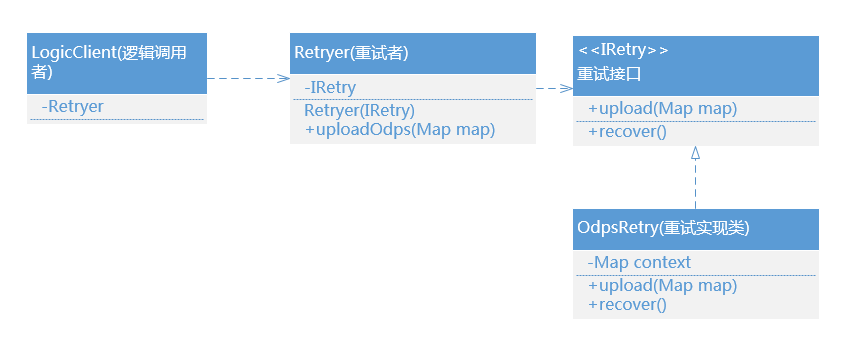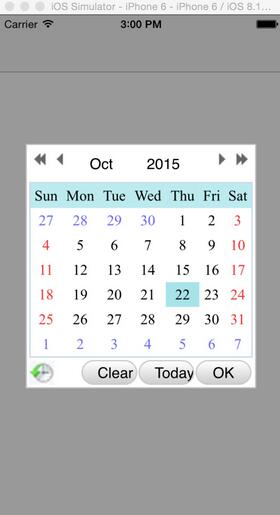springboot 是为了简化 spring 应用的创建、运行、调试、部署等一系列问题而诞生的产物, 自动装配的特性让我们可以更好的关注业务本身而不是外部的xml配置,我们只需遵循规范,引入相关的依赖就可以轻易的搭建出一个 web 工程
spring framework 对数据库的操作在 jdbc 上面做了深层次的封装,通过 依赖注入 功能,可以将 datasource 注册到 jdbctemplate 之中,使我们可以轻易的完成对象关系映射,并有助于规避常见的错误,在 springboot 中我们可以很轻松的使用它。
特点
- 速度快,对比其它的orm框架而言,jdbc的方式无异于是最快的
- 配置简单, spring 自家出品,几乎没有额外配置
- 学习成本低,毕竟 jdbc 是基础知识, jdbctemplate 更像是一个 dbutils
导入依赖
在 pom.xml 中添加对 jdbctemplate 的依赖
|
1
2
3
4
5
6
7
8
9
10
11
12
13
14
15
|
<!-- spring jdbc 的依赖包,使用 spring-boot-starter-jdbc 或 spring-boot-starter-data-jpa 将会自动获得hikaricp依赖 -->
<dependency>
<groupid>org.springframework.boot</groupid>
<artifactid>spring-boot-starter-jdbc</artifactid>
</dependency>
<!-- mysql包 -->
<dependency>
<groupid>mysql</groupid>
<artifactid>mysql-connector-java</artifactid>
</dependency>
<!-- 默认就内嵌了tomcat 容器,如需要更换容器也极其简单-->
<dependency>
<groupid>org.springframework.boot</groupid>
<artifactid>spring-boot-starter-web</artifactid>
</dependency>
|
连接数据库
在 application.properties 中添加如下配置。值得注意的是,springboot默认会自动配置 datasource ,它将优先采用 hikaricp 连接池,如果没有该依赖的情况则选取 tomcat-jdbc ,如果前两者都不可用最后选取 commons dbcp2 。 通过 spring.datasource.type 属性可以指定其它种类的连接池
|
1
2
3
4
5
6
7
8
|
spring.datasource.url=jdbc:mysql://localhost:3306/chapter4?useunicode=true&characterencoding=utf-8&zerodatetimebehavior=converttonull&allowmultiqueries=true&usessl=false
spring.datasource.password=root
spring.datasource.username=root
#spring.datasource.type
#更多细微的配置可以通过下列前缀进行调整
#spring.datasource.hikari
#spring.datasource.tomcat
#spring.datasource.dbcp2
|
启动项目,通过日志,可以看到默认情况下注入的是 hikaridatasource
|
1
2
3
4
|
2018-05-07 10:33:54.021 info 9640 --- [ main] o.s.j.e.a.annotationmbeanexporter : bean with name 'datasource' has been autodetected for jmx exposure
2018-05-07 10:33:54.026 info 9640 --- [ main] o.s.j.e.a.annotationmbeanexporter : located mbean 'datasource': registering with jmx server as mbean [com.zaxxer.hikari:name=datasource,type=hikaridatasource]
2018-05-07 10:33:54.071 info 9640 --- [ main] o.s.b.w.embedded.tomcat.tomcatwebserver : tomcat started on port(s): 8080 (http) with context path ''
2018-05-07 10:33:54.075 info 9640 --- [ main] com.battcn.chapter4application : started chapter4application in 3.402 seconds (jvm running for 3.93)
|
具体编码
完成基本配置后,接下来进行具体的编码操作。 为了减少代码量,就不写 userdao 、 userservice 之类的接口了,将直接在 controller 中使用 jdbctemplate 进行访问数据库操作,这点是不规范的,各位别学我…
表结构
创建一张 t_user 的表
|
1
2
3
4
5
6
|
create table `t_user` (
`id` int(8) not null auto_increment comment '主键自增',
`username` varchar(50) not null comment '用户名',
`password` varchar(50) not null comment '密码',
primary key (`id`)
) engine=innodb default charset=utf8 comment='用户表';
|
实体类
|
1
2
3
4
5
6
7
8
9
10
11
12
|
package com.battcn.entity;
/**
* @author levin
* @since 2018/5/7 0007
*/
public class user {
private long id;
private string username;
private string password;
// todo 省略get set
}
|
restful 风格接口
|
1
2
3
4
5
6
7
8
9
10
11
12
13
14
15
16
17
18
19
20
21
22
23
24
25
26
27
28
29
30
31
32
33
34
35
36
37
38
39
40
41
42
43
44
45
46
47
48
49
50
|
package com.battcn.controller;
import com.battcn.entity.user;
import org.springframework.beans.factory.annotation.autowired;
import org.springframework.jdbc.core.beanpropertyrowmapper;
import org.springframework.jdbc.core.jdbctemplate;
import org.springframework.web.bind.annotation.*;
import java.util.list;
/**
* @author levin
* @since 2018/4/23 0023
*/
@restcontroller
@requestmapping("/users")
public class springjdbccontroller {
private final jdbctemplate jdbctemplate;
@autowired
public springjdbccontroller(jdbctemplate jdbctemplate) {
this.jdbctemplate = jdbctemplate;
}
@getmapping
public list<user> queryusers() {
// 查询所有用户
string sql = "select * from t_user";
return jdbctemplate.query(sql, new object[]{}, new beanpropertyrowmapper<>(user.class));
}
@getmapping("/{id}")
public user getuser(@pathvariable long id) {
// 根据主键id查询
string sql = "select * from t_user where id = ?";
return jdbctemplate.queryforobject(sql, new object[]{id}, new beanpropertyrowmapper<>(user.class));
}
@deletemapping("/{id}")
public int deluser(@pathvariable long id) {
// 根据主键id删除用户信息
string sql = "delete from t_user where id = ?";
return jdbctemplate.update(sql, id);
}
@postmapping
public int adduser(@requestbody user user) {
// 添加用户
string sql = "insert into t_user(username, password) values(?, ?)";
return jdbctemplate.update(sql, user.getusername(), user.getpassword());
}
@putmapping("/{id}")
public int edituser(@pathvariable long id, @requestbody user user) {
// 根据主键id修改用户信息
string sql = "update t_user set username = ? ,password = ? where id = ?";
return jdbctemplate.update(sql, user.getusername(), user.getpassword(), id);
}
}
|
测试
由于上面的接口是 restful 风格的接口,添加和修改无法通过浏览器完成,所以需要我们自己编写 junit 或者使用 postman 之类的工具。
创建单元测试 chapter4applicationtests ,通过 testresttemplate 模拟 get 、 post 、 put 、 delete 等请求操作
|
1
2
3
4
5
6
7
8
9
10
11
12
13
14
15
16
17
18
19
20
21
22
23
24
25
26
27
28
29
30
31
32
33
34
35
36
37
38
39
40
41
42
43
44
|
package com.battcn;
import com.battcn.entity.user;
import org.junit.test;
import org.junit.runner.runwith;
import org.slf4j.logger;
import org.slf4j.loggerfactory;
import org.springframework.beans.factory.annotation.autowired;
import org.springframework.boot.test.context.springboottest;
import org.springframework.boot.test.web.client.testresttemplate;
import org.springframework.boot.web.server.localserverport;
import org.springframework.core.parameterizedtypereference;
import org.springframework.http.httpmethod;
import org.springframework.http.responseentity;
import org.springframework.test.context.junit4.springrunner;
import java.util.list;
/**
* @author levin
*/
@runwith(springrunner.class)
@springboottest(classes = chapter4application.class, webenvironment = springboottest.webenvironment.random_port)
public class chapter4applicationtests {
private static final logger log = loggerfactory.getlogger(chapter4applicationtests.class);
@autowired
private testresttemplate template;
@localserverport
private int port;
@test
public void test1() throws exception {
template.postforentity("http://localhost:" + port + "/users", new user("user1", "pass1"), integer.class);
log.info("[添加用户成功]\\n");
// todo 如果是返回的集合,要用 exchange 而不是 getforentity ,后者需要自己强转类型
responseentity<list<user>> response2 = template.exchange("http://localhost:" + port + "/users", httpmethod.get, null, new parameterizedtypereference<list<user>>() {
});
final list<user> body = response2.getbody();
log.info("[查询所有] - [{}]\\n", body);
long userid = body.get(0).getid();
responseentity<user> response3 = template.getforentity("http://localhost:" + port + "/users/{id}", user.class, userid);
log.info("[主键查询] - [{}]\\n", response3.getbody());
template.put("http://localhost:" + port + "/users/{id}", new user("user11", "pass11"), userid);
log.info("[修改用户成功]\\n");
template.delete("http://localhost:" + port + "/users/{id}", userid);
log.info("[删除用户成功]");
}
}
|
总结
本章介绍了 jdbctemplate 常用的几种操作,详细请参考 jdbctemplate api文档
目前很多大佬都写过关于 springboot 的教程了,如有雷同,请多多包涵,本教程基于最新的 spring-boot-starter-parent:2.0.1.release 编写,包括新版本的特性都会一起介绍…
原文链接:http://blog.battcn.com/2018/05/07/springboot/v2-orm-jdbc
相关文章
- ASP.NET本地开发时常见的配置错误及解决方法? 2025-06-10
- ASP.NET自助建站系统的数据库备份与恢复操作指南 2025-06-10
- 个人网站服务器域名解析设置指南:从购买到绑定全流程 2025-06-10
- 个人网站搭建:如何挑选具有弹性扩展能力的服务器? 2025-06-10
- 个人服务器网站搭建:如何选择适合自己的建站程序或框架? 2025-06-10
- 2025-07-10 怎样使用阿里云的安全工具进行服务器漏洞扫描和修复?
- 2025-07-10 怎样使用命令行工具优化Linux云服务器的Ping性能?
- 2025-07-10 怎样使用Xshell连接华为云服务器,实现高效远程管理?
- 2025-07-10 怎样利用云服务器D盘搭建稳定、高效的网站托管环境?
- 2025-07-10 怎样使用阿里云的安全组功能来增强服务器防火墙的安全性?
快网idc优惠网
QQ交流群
-
2025-05-25 53
-
2025-06-04 102
-
2025-05-27 89
-
2025-05-25 96
-
2025-05-29 83












